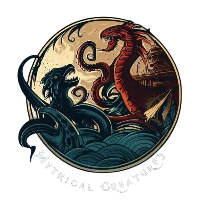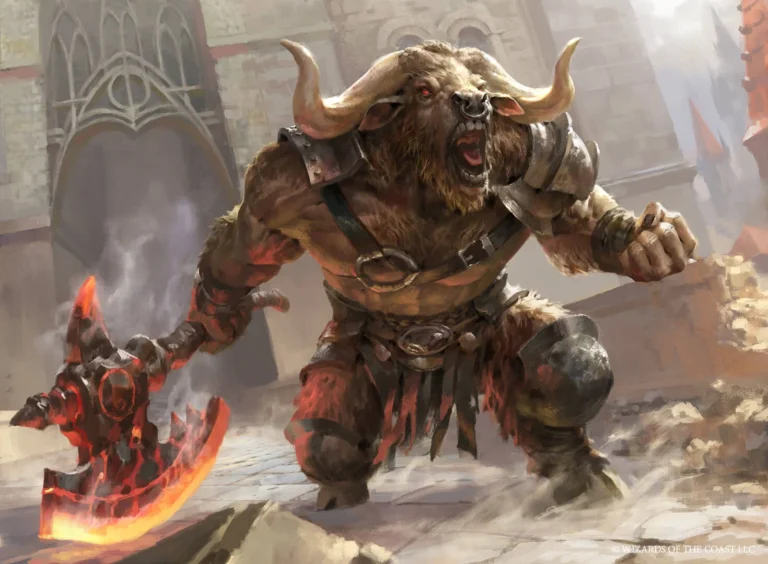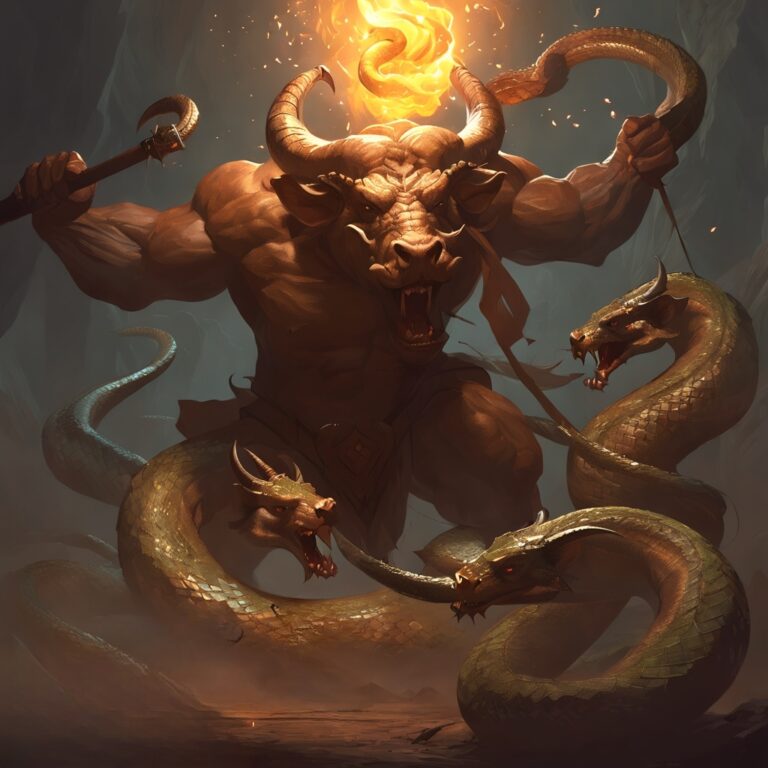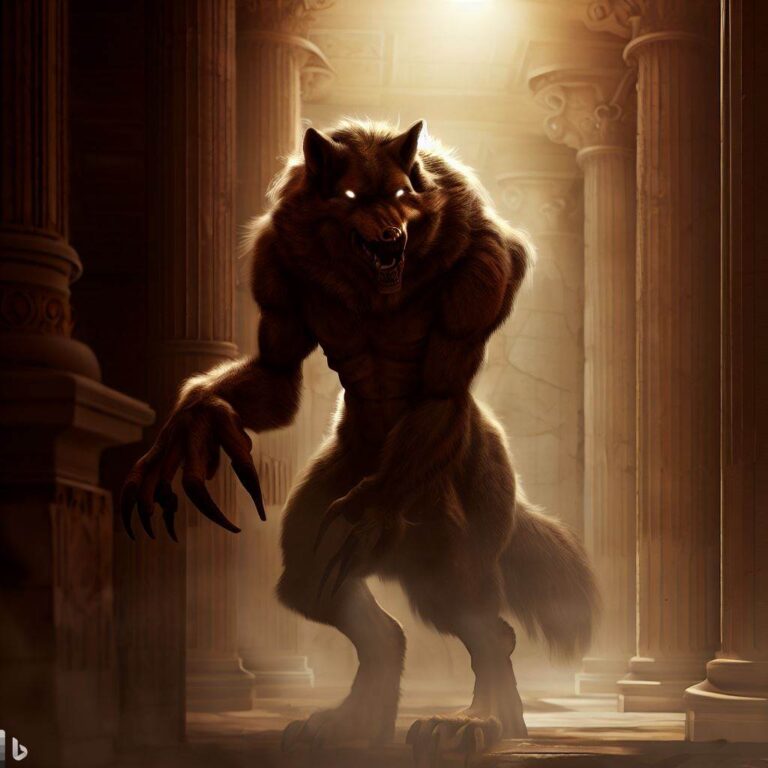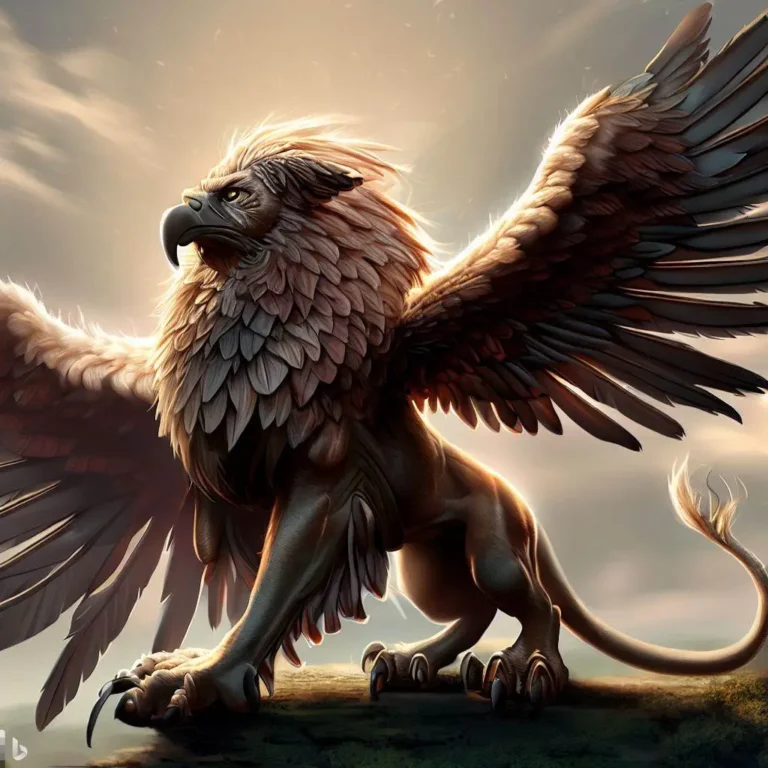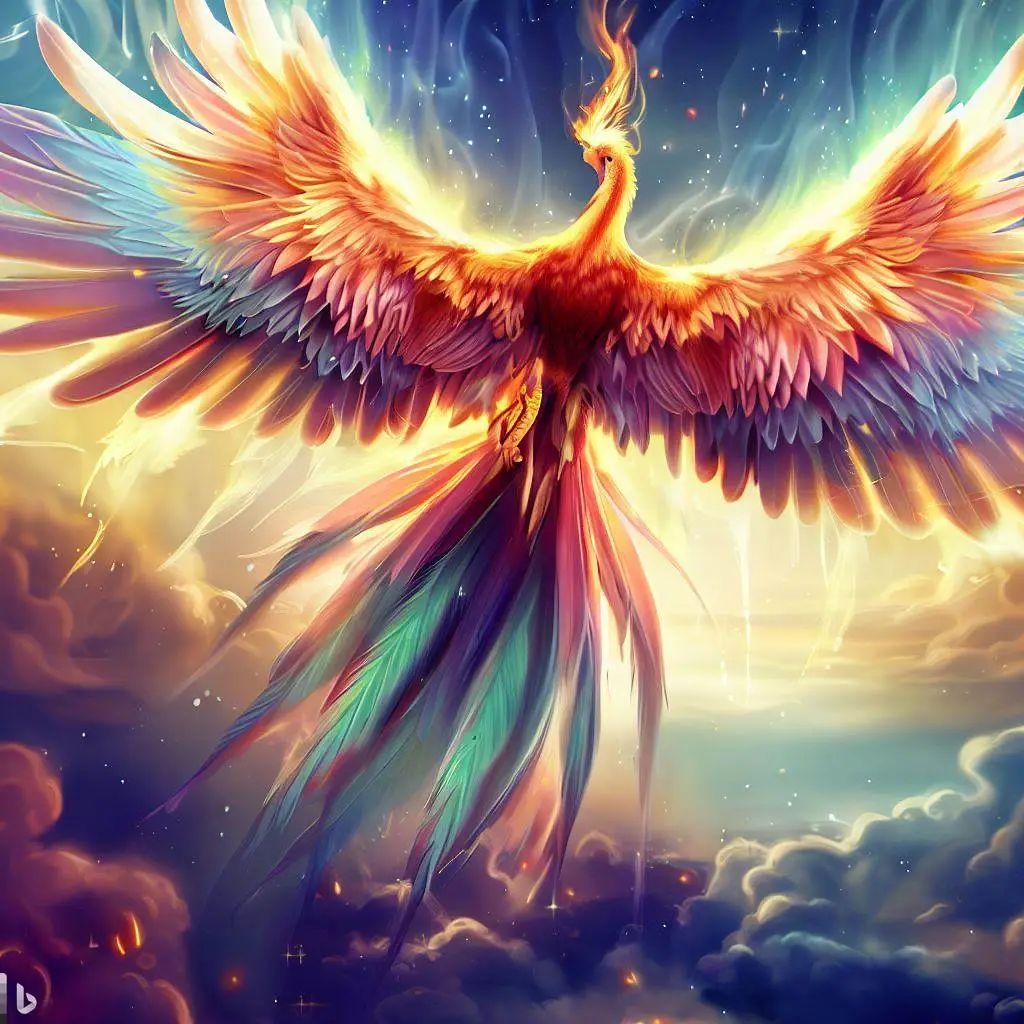
The phoenix is a legendary, mythical bird that has persisted as a symbolic image across cultures for thousands of years.
With its colorful, brilliant plumage and magical ability to regenerate from its own ashes, this fantastic creature has captivated imaginations worldwide as a powerful symbol of renewal, immortality, and the enduring human spirit.
A Brief Background on the Phoenix
The earliest origins of the phoenix myth can be traced back to ancient Egyptian and Greek civilizations, where the creature was intertwined with sun symbolism and the concept of cyclical renewal.
Variations of the phoenix myth spread through trade and cultural exchange to Asia and Persia, gaining new symbolic meanings.
Despite changes across different folklores, the phoenix remained an iconic mythical bird of fiery sacrifice, rebirth, and eternal life.
The Phoenix in Ancient Egypt and Greece
The earliest known version of the phoenix myth appeared in ancient Egypt, where the bird was called Bennu.
In Egyptian mythology, Bennu was linked to the sun god Ra and the moment of creation. The Bennu bird was said to alight on top of the benben stone at Heliopolis, which was a sacred object thought to mark the primordial mound from which life first emerged.
The ancient Greeks adapted the Egyptian Bennu into their own mythology as Phoinekes. Associated with the Greek sun god Phoibos Apollo, Phoinekes was described as a golden-red bird that built its own funeral pyre nest every 500 years.
Then, igniting this nest with the heat of the sun’s rays, it would be consumed by flames only to rise again, renewed, from the ashes.
Both versions emphasized the phoenix’s symbolic ties to the sun, the cycle of death and rebirth, and eternal renewal.
The Phoenix Across Asian Cultures
Through the expansion of trade networks, the phoenix myth spread to other ancient cultures. In China, the phoenix was called Fenghuang and symbolized high virtue, grace, and prosperity.
Chinese lore connected the Fenghuang to the Chinese Empress and the feminine principle of yin.
Meanwhile, in ancient Persia, the humā or simurgh of Persian mythology was depicted as a gigantic, mystical bird with knowledge of all ages. Believed to live for 1,700 years, the simurgh was considered sacred and featured in the famous Persian epic, the Shahnameh.
Like the phoenix, this mythical creature was associated with purification and fertility.
Christian and Medieval Symbolism
When early Christians adopted the phoenix as a symbol, they emphasized the bird’s fiery immolation and subsequent rebirth as symbolic of Christ’s death by crucifixion and resurrection three days later.
Throughout the Middle Ages, Christian mythology reinforced these symbolic parallels between Christ and the phoenix.
The phoenix started appearing in medieval bestiaries alongside other mythological creatures like dragons, griffins, and unicorns.
Renaissance artists frequently used the phoenix as a motif representing Christ, salvation, and resurrection. Even the Bard himself made references to the phoenix in his plays – a nod to the prevalence of phoenix mythology in 16th and 17th century literature.
Unique Attributes of the Legendary Phoenix
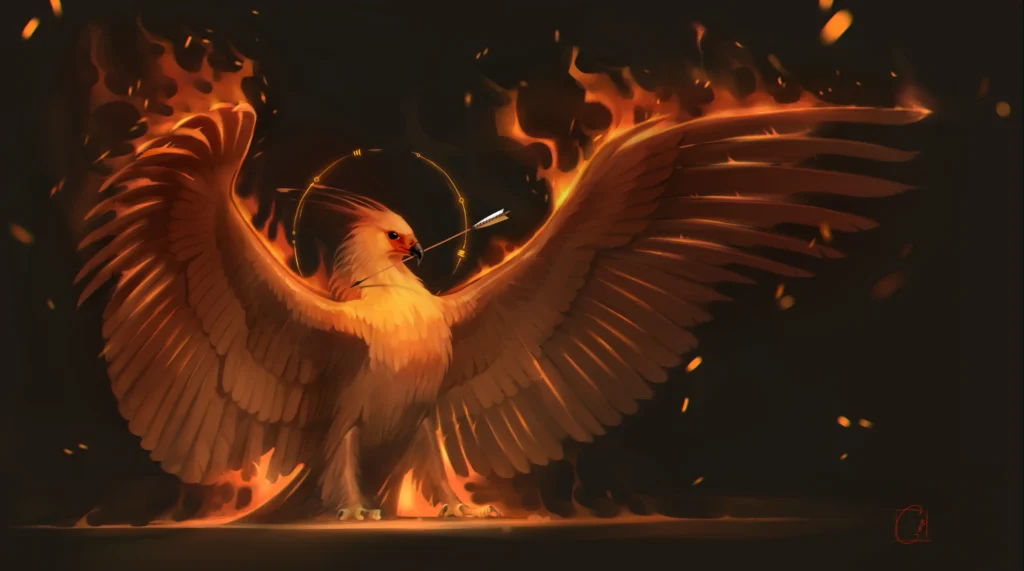
Image credits:deviantart.com
What are the distinctive traits of this mythical firebird? The phoenix is often described as a large eagle-like bird with brilliant scarlet and gold plumage, long tail feathers, and a melodious cry.
It possesses the ability to regenerate itself and emerge renewed from burning its own body to ashes in a cypress tree nest.
Key symbolic attributes include:
- Rebirth – Rising reborn from destruction
- Immortality – Death followed by resurrection
- Sun – Linked to the sun and solar cycles
- Life cycles – Periodic rebirth similar to the sun’s daily regeneration
Some versions also depict the phoenix as having healing tears and living for hundreds or thousands of years before being consumed by its cyclical fiery death and rebirth.
The Relevance and Appeal of the Phoenix in Modern Culture and Society
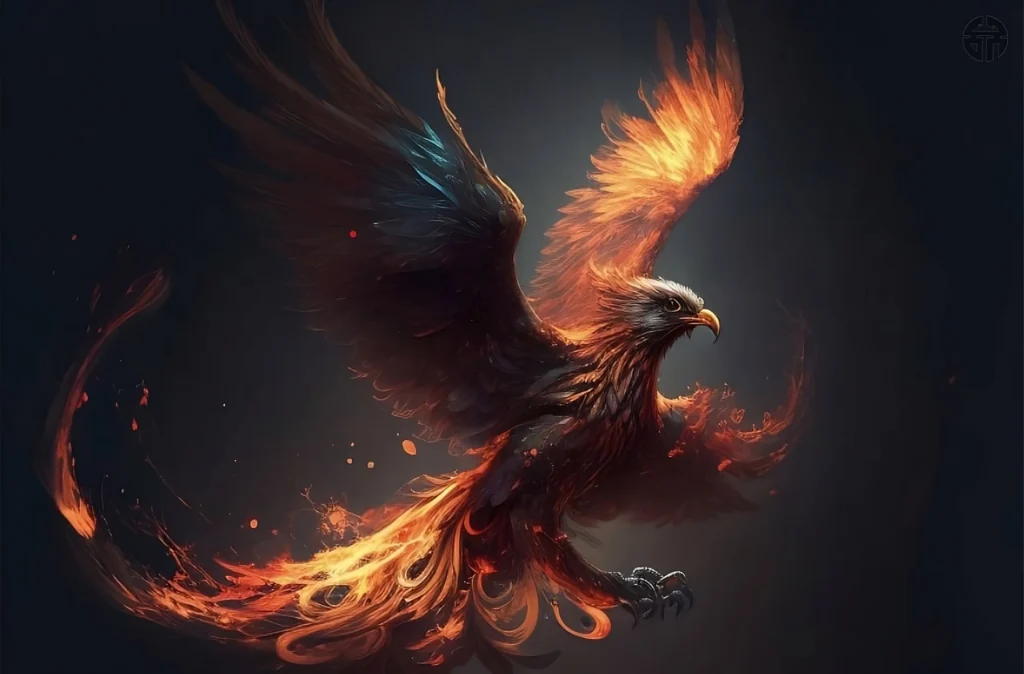
Image credits:deviantart.com
The phoenix has continued to inspire and influence people in various aspects of contemporary culture and society.
The phoenix has been adapted and incorporated into popular media and entertainment, such as movies, TV shows, video games, comics, music, tattoos, fashion, and jewelry.
The phoenix has also been adopted and embraced by different groups and movements that identify with its values and attributes.
Movies That Featured The Phoenix

Image credits: X-Men, Harry Potter, Fantastic Beasts, Maleficent
The phoenix has appeared or been mentioned in several movies, such as The Hunger Games, X-Men, Harry Potter, Fantastic Beasts, Maleficent, Clash of the Titans, and others. The phoenix has been used to symbolize different characters, themes, or events in these movies, such as courage, sacrifice, power, rebirth, magic, or destiny.
The Phoenix In TV Series
The phoenix has also been featured or referenced in various TV shows, such as Game of Thrones, Supernatural, Doctor Who, Avatar: The Last Airbender, The Vampire Diaries, and others. The phoenix has been used to represent different aspects or elements of these shows, such as fire, dragons, immortality, resurrection, or prophecy.
Video Games With The Phoenix in Them

images credit: World of Warcraft, Pokemon, Dark Souls, Assassin’s Creed
The phoenix has also been included or alluded to in many video games, such as Final Fantasy, World of Warcraft, Pokemon, Dark Souls, Assassin’s Creed, and others.
The phoenix has been used to provide different functions or effects in these games, such as enemies, allies, items, spells, skills, or achievements.
The Phoenix Myth in Comics
The phoenix has also been portrayed or invoked in several comics, such as Marvel Comics, DC Comics, Sandman, Fables, and others.
The phoenix has been used to illustrate different stories or characters in these comics, such as Phoenix Force, Firestorm, Dream, Snow White, or others.
Songs Featuring The Phoenix
The phoenix has also been sung or written about in many songs or albums by various artists or bands, such as Fall Out Boy, Imagine Dragons, Sia, Katy Perry, Ed Sheeran, and others.
The phoenix has been used to express different emotions or messages in these songs or albums, such as survival, hope, empowerment, love, or change.
Tattoos Of The Phoenix
The phoenix has also been a popular choice for tattoos by many people who want to decorate their bodies with a meaningful symbol.
The phoenix has been used to convey different personal meanings or stories by these people, such as recovery, growth, identity, faith, or passion.
The Phoenix In Fashion
The phoenix has also been a fashionable motif for clothing and accessories by many designers or brands who want to create a unique and attractive style.
The phoenix has been used to display different aesthetic qualities or trends by these designers or brands, such as color, flair, elegance, or edge.
These are just some of the examples of how the phoenix has remained relevant and appealing in modern culture and society.
The phoenix is truly a universal and timeless symbol that has multiple applications and implications for human life and society.
The Enduring Legend of the Phoenix
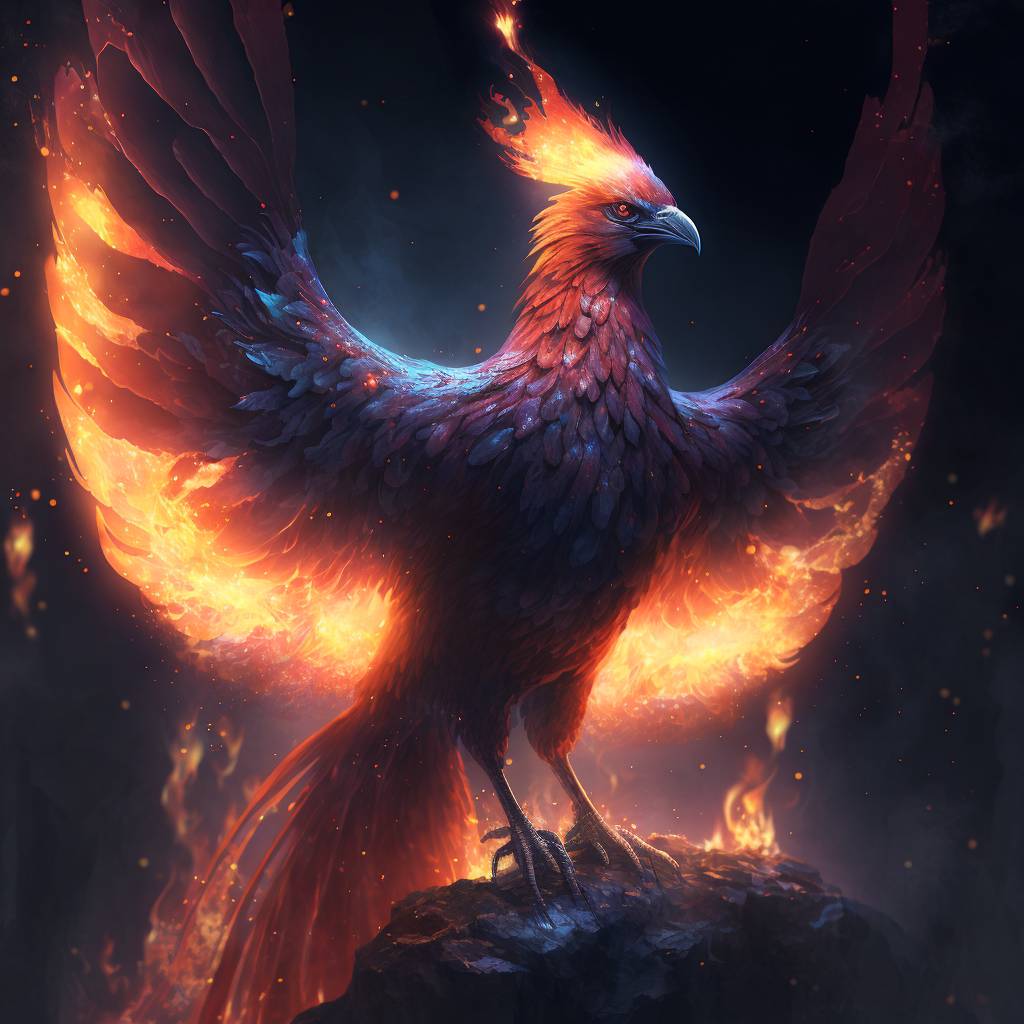
Image credits:deviantart.com
For thousands of years, the phoenix has endured as a legendary mythical bird that rose again with renewed life from flames and ashes.
This iconic image gave hope to ancient Egyptians linked to the sun god Ra, Greeks who saw perpetual rebirth in its story, and Christians who used the phoenix to represent Christ’s resurrection.
Today, the phoenix remains a popular reference in modern literature, films, and pop culture, reminding us of the enduring symbolic power of rising again no matter how devastating the tragedy.
For a mythical creature, the legendary phoenix has had a very real cultural impact through the ages.
FAQs about the Phoenix Myth
What does the phoenix symbolize?
As a mythological creature, the legendary phoenix most famously symbolizes renewal, resilience, and rising again after suffering calamity or destruction. It represents the enduring human hopes for regeneration, redemption, and eternal life.
What powers does the phoenix have?
Myths credit the phoenix with having cleansing tears, longevity or immortality, and the ability to cyclically regenerate itself from fiery death by being reborn from its own ashes. It is strongly linked to solar power and concepts of resurrection.
Is the phoenix real?
No, the phoenix originates from ancient mythologies and has no basis in the real, natural world. Like dragons and unicorns, it is a purely legendary and symbolic creature used as an allegory by many cultures.
How does a phoenix die and come back to life?
A phoenix dies by setting itself on fire at the end of its lifespan (which varies from 500 to 1,000 years depending on the source). A phoenix comes back to life by rising from its own ashes after a period of time (which ranges from three days to a century depending on the source).
Is there a real bird that inspired the phoenix myth?
There is no definitive answer to this question. Some scholars have suggested that the phoenix myth may have been inspired by real birds that have some resemblance or connection to the phoenix. Some possible candidates are:
- The bennu bird of Egypt: A heron-like bird that was associated with the sun god Re and the creation of the world.
- The simurgh of Persia: A giant bird that had healing powers and could purify water with its touch.
- The garuda of India: A large bird-like creature that was half-human and half-eagle.
- The flamingo: A pink-colored bird that lives in flocks near water sources. It was believed by some ancient cultures that flamingos could regenerate themselves from blood.
- The peacock: A colorful bird that has a fan-like tail with eye-like patterns. It was considered by some ancient cultures as a symbol of immortality and resurrection.
What is the difference between a phoenix and a firebird?
A phoenix and a firebird are often used interchangeably as terms for the same mythical creature. However, some sources may distinguish between them based on their origin, appearance, or behavior. For example, some sources may use the term firebird to refer to the Slavic or Russian version of the phoenix, which is a glowing bird that can light up the night sky with its feathers. Some sources may also use the term firebird to refer to a bird that is not immortal or reborn, but simply has a fiery nature or ability.
How many types of phoenixes are there?
There are many types of phoenixes, depending on how they are classified by their origin, appearance, lifespan, rebirth process, or meaning. Some examples are:
- The Egyptian phoenix: The original version of the phoenix that was known as the bennu bird. It was depicted as a heron-like bird with a long beak and a two-feathered crest. It had a lifespan of 500 years and was reborn from its ashes after setting itself on fire in a nest of spices.
- The Greek phoenix: The version of the phoenix that was named by the Greeks and popularized by Herodotus. It was depicted as a large and beautiful bird with red and gold feathers. It had a lifespan of 500 years and was reborn by flying to Egypt with its parent’s body wrapped in myrrh and burying it in the temple of Re at Heliopolis.
- The Roman phoenix: The version of the phoenix that was influenced by the Romans and other cultures. It was depicted as an eagle-like bird with purple and scarlet feathers. It had a lifespan of 1,000 years and was reborn by flying to Rome with its ashes in an egg-shaped urn and presenting it to Jupiter’s altar.
- The Chinese phoenix: The version of the phoenix that was known as the fenghuang in China. It was depicted as a composite creature that had the head of a rooster, the body of a mandarin duck, the tail of a peacock, the wings of a swallow, the legs of a crane, and the feathers of five colors (red for fire, blue for water, green for wood, white for metal, and yellow for earth). It was the ruler of all birds and the emblem of the empress. It was a symbol of harmony, balance, beauty, and auspiciousness.
- The Japanese phoenix: The version of the phoenix that was known as the hō-ō in Japan. It was similar to the fenghuang in China, but with some differences. It had the head of a phoenix, the neck of a snake, the back of a tortoise, the tail of a fish, and the feathers of seven colors (white for the sun, black for the moon, red for fire, green for wind, yellow for earth, blue for water, and purple for harmony). It was the guardian of the imperial house and the messenger of the gods. It was a symbol of peace, justice, fidelity, and prosperity.
Conclusion
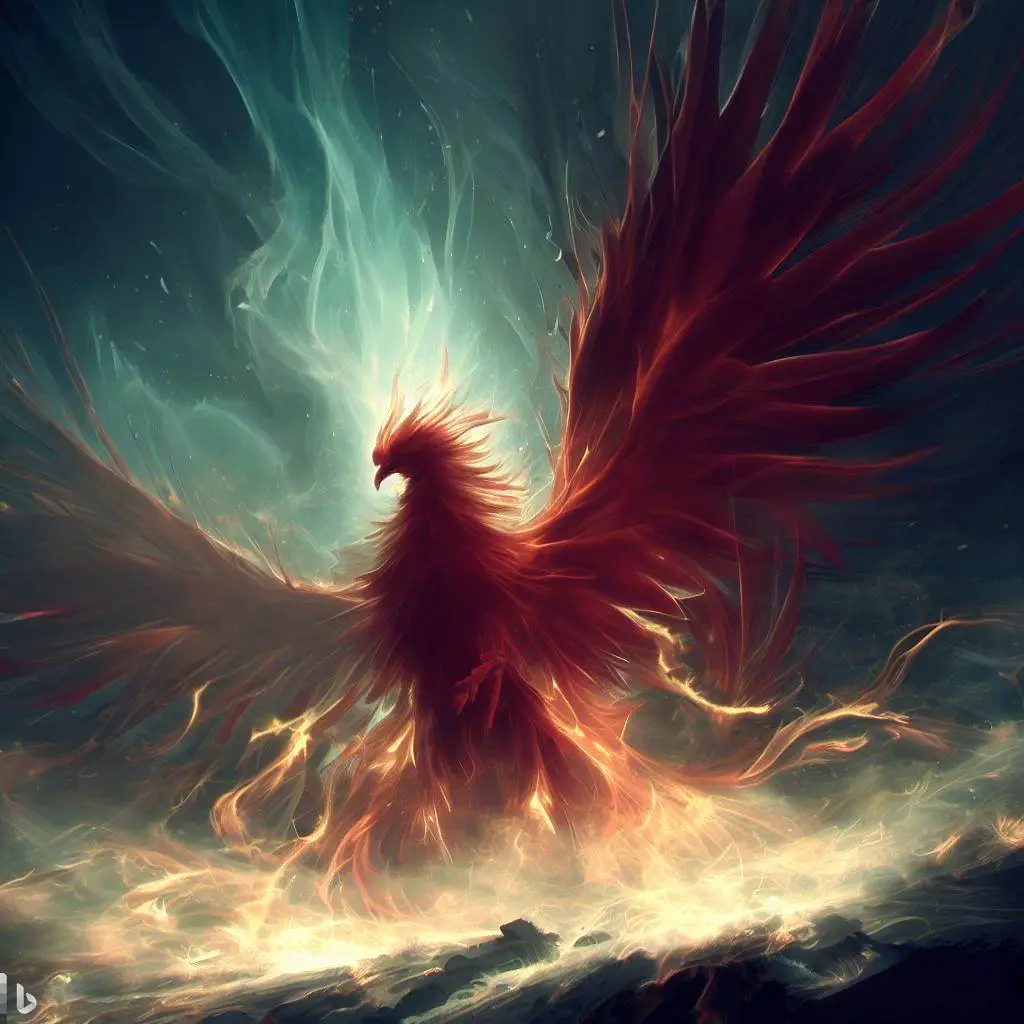
The phoenix is more than just a mythical creature. It is a symbol of immortality, rebirth, renewal, resurrection, transformation, spirituality, hope, faith, courage, power, freedom, creativity, beauty, and more.
It is a symbol that reflects the complexity, diversity, and beauty of human experience and imagination.
The phoenix is truly a universal and timeless symbol that has multiple layers of meaning and significance for human life and society.
